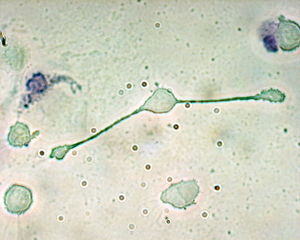Integrated Medicine with Heart Surgery

The movement to treat the whole person is a lot more developed in Europe than tit is in the United States. So it is always gratifying to see research on integrated medicine on this side of the pond. Even if there are critics who call anything holistic “woo woo,” the fact is that patients like the approach, and there is a developing research base.
A new study from the Mayo Clinic indicates that massage therapy decreases pain levels for patients after heart surgery. During a five-month period in 2005, 58 patients undergoing surgery participated in a pilot study to examine the effect of massage on pain after surgery. Of the 30 who received massage, the mean pain scores were less than 1 on a scale of 1 to 10, with 10 as the most painful.
Before the massage therapy, these patients rated their pain at an average of 3 on a 10-point scale. In the control group of 28, pain levels remained the same over the same period, according to findings published in the current issue of Complementary Therapies in Clinical Practice.
As a result of the pilot study, Mayo now has a full-time massage therapist available for patients after heart surgery, and a larger, randomized study is under way.
The reason for the study was that patients often report that tension, stress, pain and anxiety get in the way of their recovery after cardiac surgery. Therefore apart from massage, the researchers are also exploring the use of stress management, music therapy and guided imagery as adjuncts to the best of modern medicine.
This makes good sense, and I shall keep you posted as more information is published.
Relationships, Conflict and Heart Disease

Robust, dynamic and balanced relationships can be the source of untold support and happiness in our lives. They can also provide us with the scaffolding on which to structure and maintain the health and meaning of our existence.
On the other hand, precisely because positive relationships can be such powerful forces for good, toxic, fractured and unbalanced interactions can create physical, emotional, social and spiritual havoc. Most of the evidence about the physical impact of negative relationships has concerned heart disease and disturbances of the immune system.
An article in this week’s issue of the Archives of Internal Medicine continues to flesh out the interaction between dysfunctional relationships and heart disease, suggesting that If you are in stuck in a close relationship with many negative characteristics, for instance conflict, you may well have a raised risk of heart disease, compared with somebody whose close relationship is more positive overall.
Roberto De Vogli and his colleagues from University College, London, looked at 9,011 British civil servants who filled in a questionnaire about negative aspects of their close relationships during two periods: 1989-1990 and 1985-1988. The main focus was on couples and participants also outlined how much regular emotional and practical support they received from their partners. They were followed up twelve years later to find out whether they had had a fatal or non-fatal coronary event, including chest pain of cardiac origin or a full-blown heart attack.
Of 8,499 people who were followed up and had provided enough information at the start of the study, quite a high number – 589 – had sustained a coronary heart disease event, although none of them had obvious coronary heart disease at the beginning of the study. The analysis took account of multiple potentially confounding risk factors including socioeconomic status and health habits. When they had all been stripped away, the researchers found that there was a 1.34 higher risk of coronary heart disease events among those who experienced a high level of negativity in their close relationships. This link was found in both men and women and in each social class. It could not be explained by depression or negative personality traits: it seemed to be the negative relationships itself that was to blame.
We already know that negative marital interactions are associated with depression, often in combination with reduced self-esteem and higher levels of anger. These are all emotions that can have both acute and chronic effects on the coronary arteries, through alterations in the normal balance of the autonomic nervous system, neuroendocrine changes, disturbances in coagulation and inflammatory and immune responses.
Many people are sensitive to any kind of negative interactions in the people around them, but the effects are particularly toxic if they involve the people closest to us. They are more likely to elicit strong emotions such as worry and anxiety that are the most likely to induce effects on our bodies.
Staying in a chronic negative relationship may be more than just masochistic.
It could kill you.
“Tenderness emerges from the fact that the two persons, longing, as all individuals do, to overcome the separateness and isolation to which we are all heir because we are individuals, can participate in a relationship that, for the moment, is not of two isolated selves but a union.”
–Rollo May (American Existential Psychologist, 1909-1994)
“Whenever you’re in conflict with someone, there is one factor that can make the difference between damaging your relationship and deepening it. That factor is attitude.”
–Timothy Bentley (Canadian Family Therapist)
“Today the network of relationships linking the human race to itself and to the rest of the biosphere is so complex that all aspects affect all others to an extraordinary degree. Someone should be studying the whole system, however crudely that has to be done, because no gluing together of partial studies of a complex nonlinear system can give a good idea of the behavior of the whole.”
–Murray Gell-Mann American Physicist Noted for his Concept of Strangeness and the Discovery of Quarks, and, in 1969, Winner of the Nobel prize in Physics, 1929-
“We shield our heart with an armor woven out of very old habits of pushing away pain and grasping at pleasure. When we begin to breathe in the pain instead of pushing it away, we begin to open our hearts to what’s unwanted. When we relate directly in this way to the unwanted areas of our lives, the airless room of ego begins to be ventilated.”
–Pema Chodron (Formerly Deirdre Blomfield-Brown, American Buddhist Nun, 1936-)
A Virus Linking Depression, Aging and Heart Disease

We have known for a long time that there are close links between depression, aging and heart disease, but the nature of the link has remained elusive. Most of the smart money has been on inflammation, but there could be other candidates.
New research in the journal Brain, Behavior and Immunity has linked an increase in two inflammatory proteins in the immune system with a latent viral infection and proposes a chain of events that might accelerate cardiovascular disease. It is possible that the same process may be involved in a number of other ailments that can afflict us, as we get older. The findings also suggest that chronic depression may play a key role in initiating the cascade that can lead to the development of coronary artery disease.
It has been known for some time that increased levels of the proinflammatory cytokines, TNF-α and IL-6, predict mortality and morbidity. High levels of each of them are found in the plasma and in atherosclerotic lesions of people with cardiovascular disease.
The levels of IL-6 in the body increase as the immune system ages. Some of the IL-6 is generated by immune cells – macrophages – that go to the site of an infection or injury. Earlier work by the team also showed that increases in psychological stress and depression could substantially raise the levels of IL-6 and TNF-α in the body.

Increased stress and depression can also trigger latent viruses to reactivate and begin reproducing inside cells. The viruses of greatest interest are some herpes viruses such as the Epstein-Barr virus (EBV). We know that up to 90% of the people in North America have been infected by EBV by the time they are adults.
If EBV begins to multiply in cells in the body, it produces a protein called dUTpase that, in turn, can stimulate macrophages to make yet more IL-6.
The researchers developed a model to test these linkages by using endothelial cells that line the inside of veins in umbilical cord tissue. I spent years working with these cells myself, and they provide an excellent substrate for examining vascular responses and the interaction between blood vessels and macrophages when exposed to the virus as well as the dUTpase protein.
As expected, the production of IL-6, as well as TNF-a, were increased just as they would be as part of the inflammatory process in the body. Such chronic incidents of inflammation are integral to the onset of atherosclerosis and an array of other diseases.
This work suggests a new way of thinking about how vascular diseases develop. We carry around these latent herpes viruses in our bodies virtually all our lives and periodically they can hurt us as we age, develop depression or, perhaps a nutritional imbalance.
Taken together with the recent data on the physical effects of loneliness, if you want to live a long and healthy life:
- Watch you mood: depression can kill you
- Stay socially engaged: loneliness can be fatal
- Maintain a balanced diet
- Take some physical exercise every day
- Learn – and practice! – some simple stress management techniques. You can obtain some at RichardGPettyMD.com
Sleep and Your Heart

The amount of sleep a person gets affects his or her physical health, emotional well-being, mental abilities, productivity and performance. Recent studies associate lack of sleep with serious health problems such as an increased risk of depression, obesity, cardiovascular disease and diabetes.
There was some interesting research presented at SLEEP 2007, the 21st Annual Meeting of the Associated Professional Sleep Societies in Minneapolis in the middle of June.
One study that caught my eye was conducted by Siobhan Banks of the University of Pennsylvania School of Medicine. The research was based on preliminary analysis of 39 subjects, each of whom participated in a laboratory-controlled chronic sleep restriction protocol. The subjects underwent two nights of baseline sleep followed by five hours of sleep restriction. The results showed a statistically significant decrease in the heart rate variability after just five nights of sleep restriction.
We already know that a reduction in heart rate variability may occur in several cardiological and non-cardiological diseases, and it is usually a harbinger of a poor outcome.
This work may provide the mechanism for why short sleep duration is associated with a heightened risk of heart and other circulatory problems.
The amount of sleep a person gets affects his or her physical health, emotional well-being, mental abilities, productivity and performance. Recent studies associate lack of sleep with serious health problems such as an increased risk of depression, obesity, cardiovascular disease and diabetes.
So if confirmed, the take home message is that sleep deprivation has a negative effect on a person’s cardiac activity and that may in turn increase the risk of cardiovascular disease and mortality.
Diabetes, Inflammation and the Heart

One of the most worrying signs in people with type 1 diabetes is damage to the nerves supplying the heart. This is called cardiovascular autonomic neuropathy, and one of its first signs is a reduction in the normal heart rate variability (HRV).
It has been known for many years that people with both type 1 and type 2 diabetes have low grade inflammation, and inflammation can have profound effects on the activity of the autonomic nervous system.
A study from Sabadell in Spain has tried to sort out these links in a study of 120 people with longstanding type 1 diabetes.
They measured a great many things including tumor necrosis factor, alpha-receptors 1 and 2, IL-6, and C-reactive protein; insulin resistance and HRV in response to deep breathing and the Valsalva maneuver” forcibly exhaling against with mouth and nose closed.
They did indeed find a link between low-grade inflammation and early alterations in the nerve supply to the heart.
This is important information: when we proposed that inflammation might be an important player in diabetes back in the 1980s, it was greeted with disbelief. Twenty years on it looks as if we might have a whole new line of treatment on the horizon, which will include nutrition and exercise as well as supplements and medications.
T’ai Chi Chih and the Sympathetic Nervous System

One of the problems about getting older is that the activity of the sympathetic nervous system may increase, bringing with it an increased risk of metabolic problems such as insulin resistance, hypertension and cardiovascular disease.
The sympathetic nervous system is a branch of the autonomic nervous system. It is always active at a basal level, which is called sympathetic tone. It becomes more active during times of stress. Its actions during the stress response comprise the classical fight-or-flight response.
There is a very interesting study from the Norman Cousins Center for Psychoneuroimmunology at the UCLA Semel Institute for Neuroscience & Human Behavior in Los Angeles.
There were 32 people in the study aged 60 or over. There were 19 people who were T’ai Chi Chih (TCC) practitioners and 13 who were not. The practitioners had completed a 25-week training in TCC the 13 others just had health education classes. T’ai Chi Chih is a simplified type of T’ai Chi that emphasizes the development of qi, a.k.a. chi.
TCC practitioners performed the breathing and movements for 20 minutes, while HE participants passively rested for the same time. Investigators measured various cardiovascular parameters before and after the task. A subsample of participants returned for a second evaluation and performed videotape-guided stretching for 20 minutes to evaluate the cardiovascular effects of slow-moving physical activity. TCC performance was found to significantly decrease sympathetic nervous system activity as measured by cardiac pre-ejection, blood pressure and heart rate. In contrast, there was no change in sympathetic activity following passive rest or slow-moving physical activity.
This shows us that there is something different about T’ai Chi. Practicing it leads to a decrease in activity of the sympathetic nervous system to levels that are not achieved by performing comparable physical activity alone.
Global Warming May Be Fatal

There are several reasons for being concerned about climate change. One is that global warming may cause significant changes in patterns of disease.
An analysis published last month in Occupational and Environment Medicine found that global warming will cause more deaths in summer because of higher temperatures but these will not be offset by fewer deaths in milder winters
The Harvard researchers analyzed city-specific weather data related to the deaths of more than 6.5 million people in 50 US cities between 1989 and 2000.
They found that during two-day cold snaps there was a 1.59% increase in deaths because of the extreme temperatures. However, during similar periods of extremely hot weather death rates went up by 5.74%. An important point is that deaths did not rise as steeply when temperature fluctuations were less extreme.
Deaths from all causes are known to rise when temperatures go up while heart attacks and cardiac arrests are more likely when it is very cold. It was anticipated that global warming would increase deaths during hot temperatures but that this would be compensated for by fewer deaths in the winter.
The authors conclude:
“Our findings suggest that decreases in cold weather as a result of global warming are unlikely to result in decreases in cold-related mortality in the US. Heat-related mortality, in contrast, may increase, particularly if global warming is associated with increased variance of summer temperature.”
While all 50 US cities showed similar rises in deaths when temperatures plummeted, more deaths were seen during extreme temperature rises in cities with milder summers, less air conditioning and higher population density.
The authors suggest that this is because the use of central heating is widespread, whereas fewer people have air-conditioning in their homes.
They said:
“Central heating, which constitutes an important adaptive mechanism against cold, is almost universal in the US and this may explain why the US population seemed fully acclimatized to cold.
Making air conditioning universally available may reduce heat-related mortality but would, on the other hand, have a perverse effect by enhancing global warming through carbon dioxide emissions from electricity consumption.”
This advice is very sound.
There are two other points. First, it is sudden changes in temperature that cause the problems: we are quite god at acclimatizing to extremes. But if global warming brings with it more instability in the climate then we will likely see much more of a problem.
Second, and something that is often missed by the naysayers about global warming, is that most of us no longer have a luxury enjoyed by our ancestors: When they endured ice ages and periods of warming, they could simply migrate to a more congenial region.
Most of us are stuck where we are, and that’s the big problem when we think about the health consequences of environmental change.
Whole Grains

Every day of the week I talk to people who say that they do not have time to eat a healthy diet or hunt for the right type of victuals, and so off they go to the health food store to buy some capsules.
How many advertisements have you seen for some capsule or powder that gives you all the nutrients and fiber that you need? But think about that for a moment: does that make sense? For millions of years our far-distant ancestors co-evolved with the plants and minerals around them. So does it make sense that we can pull out one dietary component and ignore the rest? Or that the berries of some plant growing thousands of miles from early humankind could contain some magic potion that will solve all of our problems? That would imply a rather capricious Universe that only wants you to find that essential something when you have the money and the wherewithal to find.
Back when the world was new – well, come to think, it was 1974 – I was impressed to see some early data that showed dramatic differences between the exquisitely balanced nutrient profile of an orange compared with commercially prepared orange juice. A few years later we even did a bit of research on the subject.
This topic has re-emerged with some new research that has received justified plaudits from experts at the American Institute for Cancer Research. The study has indicated that whole grain fiber rather than fiber from other food sources, is associated with lower risk of colorectal cancer.
The study was recently published in the American Journal of Clinical Nutrition and found that consumption of whole grains was associated with lower risk for colorectal cancer. The same study found no significant link between consumption of fiber from other food sources and colorectal cancer risk.
Researchers at the National Institutes of Health analyzed survey results from a huge prospective cohort study called the NIH-AARP Study involving more than 291,000 men and 197,000 women aged 50 to 71.
The scientists analyzed the participant’s intake of fiber from many different food sources, but only fiber from whole grains was associated with lower risk of colorectal cancer. In the study, those subjects who ate the most whole grains had a 20 percent lower risk of colorectal cancer than those who ate the least.
The observed protective effect of whole grain consumption was stronger for rectal cancer, with a 35 percent lower risk.
Experts have been following the conflicting and often contradictory findings on fiber and colorectal cancer for years.
Much of the previous research simply measured the participants’ total fiber intake. The trouble is that so much of the American diet is now made up of heavily processed grains in foods like pasta, cereals and breads, so “Fiber” is a really mixed bag. So it seemed that it might be helpful to distinguish between different food sources of fiber.
Let’s have a quick refresher course. All grains, from the familiar, like wheat, oats, rye, corn, to the less well known such as barley, bulgur, millet, quinoa start out as kernels. The bran is the outermost layer of the kernel, and that is where most of the fiber is found. The germ lies at the center of the kernel, and that is where most of the vitamins, minerals and fatty acids reside. In between the brain and the germ lies the endosperm, which contains a few vitamins and minerals and most of the starch.
Because the refining process removes the bran and germ, the main component of white bread and other products made from refined grains or white flour is starch. Whole grain products are darker and chewier than refined grain products is because all three layers of the kernel are ground together to make whole grain flour. This provides the kernel’s full complement of protein, fatty acids and a range of phytochemicals. Most importantly, perhaps, the fiber content of whole grains can be as much as four times that of refined grains.
The evidence connecting consumption of whole grains to reduced risk for cancer, cardiovascular disease, stroke and diabetes comes chiefly from population studies and laboratory work. Only recently have researchers begun to identify specific ways a diet high in whole grains promotes health.
In February 2006 a study also published in the American Journal of Clinical Nutrition found that a high whole-grain intake had a number of objective effects on physiological markers – homocysteine, plasma markers of glycemic control (fasting insulin, hemoglobin A1c, C-peptide, and leptin), lipids (total cholesterol, triglyceride, HDL cholesterol, and LDL cholesterol), and inflammation (C-reactive protein, fibrinogen, and interleukin 6 – that may be associated with both diabetes and cardiovascular disease almost all improved and none became worse.
The evidence for whole grains specifically lowering cancer risk is less strong. However, in 2003 European Prospective Investigation into Cancer (EPIC) prospectively examined the association between dietary fiber intake and incidence of colorectal cancer in 519,978 individuals aged 25 to 70 years, recruited from 10 European countries. The data showed that high consumption of fiber (from fruits, vegetables and whole grains) reduced risk for colon cancer by 25 percent.
Although most experts have been recommending “whole grain foods” for years, this new study finally proves that the fiber that we get from whole grains is different from the fiber we get from “starchy” foods like white bread and processed cereal, and that these differences are not only important for the vascular system and diabetes, but also for cancer risk.
Personal Mastery and the Wellness of Caregivers

Looking after aging relatives can be incredibly difficult, particularly if they have a chronic illness such as Alzheimer’s disease.
There is also evidence that the caregivers of people with Alzheimer’s disease have increased rates of cardiovascular disease and they die prematurely. It has been assumed that the cardiovascular problems are a result of stress causing overdrive of the sympathetic nervous system.
There was some interesting research (NR241) presented last month at the 2007 Annual Meeting of the American Psychiatric Association in San Diego. The investigators did not have to come far: they are from the University of California in San Diego.
The investigators looked at 70 spousal caregivers of people with Alzheimer’s disease and used an experimental task to measure the activity of their sympathetic nervous systems. They also measured the caregiver’s levels of “Mastery:” the belief that one is capable of handing one’s problems. Mastery is one of the components of resilience, a key characteristic of a person who can handle stress well.
What they found make very good sense: the caregivers with the highest levels of personal mastery had the lowest levels of sympathetic activity, suggesting that a sense of mastery may protect against the physiological effects of acute stress.
This provides us with yet more evidence that psychosocial interventions that increase mastery may reduce the risk of cardiovascular disease amongst the caregivers of people with dementia.
Avandia and Heart Attacks: Hold Your Horses
The report in today’s New England Journal of Medicine about an apparent association between Avandia (rosiglitazone) and heart attacks made the front page of USA Today.
While it is an important study, it is important that we don’t go overboard until we have a little more information.
There is a key principle that we have looked at before: one study is rarely enough to prove that a thing is so. The scientific method is based on the principle of falsifiability: now that this data has been published it is up to scientists and investigators to try and disprove the finding.
The analysis in the New England Journal suggests that the risk of a heart attack increases by 43% for patients taking rosiglitazone compared to control groups, and the risk of death by heart attack by 64%. This data comes from the so-called “A Diabetes Outcome Prevention Trial” (ADOPT). This is one of three studies on the topic. The Diabetes Reduction Assessment with Ramipiril and Rosiglitazone Medication (DREAM) study that involved over 5,000 patients was published in the Lancet last September. This study showed small increases in cardiovascular events compared to controls, which were not statistically significant. The other key finding of the DREAM study was that it reduced the risk of progression of pre-diabetes to type 2 diabetes by 62%. That is important because it may mean that we need much longer studies: diabetes increases the risk of heart disease year after year. ADOPT involved more than 4000 patients, with the only significant relevant finding an excess of congestive heart failure episodes for rosiglitazone-treated patients compared with people who received the older diabetic medicine, glyburide (22 compared with nine events).
So there may be a signal there, but before stopping the medicine, we need to remember that the numbers of patients who developed problems is small. Obviously big enough if you are one of them, but the risk is still not that high given the high rates of heart diseases in people with diabetes.
There is another study on the horizon: The Rosiglitazone Evaluated for Cardiac Outcomes and Regulation of Glycemia in Diabetes (RECORD) trial, which is a phase III trial specifically designed to analyze cardiovascular events connected to use of rosiglitazone. The study that hit the front page is a meta-analysis, and even the authors admitted that there were some weaknesses in it. Though it is a personal choice that people have to make with their clinicians, many experts think that we can wait for the results of the third study so that we can make some sensible decisions.
And for the record, I have no connections with the manufacturer of Avandia, GlaxoSmithKline.






